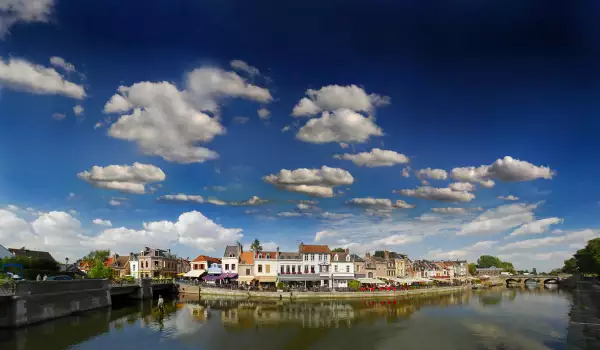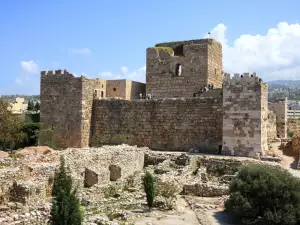Amiens

The French city of Amiens is situated in the north, almost halfway between Paris and Belgium. Through it passes the beautiful river Somme, which 55 km to the northwest flows into the English Channel. The whole area around Amiens is cut by channels that interweave as a network.
They were dug about 2 millennia ago by the Romans and now are a UNESCO world site. Amiens is one of the largest cities in France. It is located in the Picardy region, which is famous as "the color valley of France". About the mastery of "florange" in Amiens tells the famous book "Perfume: The Story of a Murderer", by Patrick Susskind.
Located 120 km north of the French capital Paris, in Amiens today live approximately 150 000 people. The story begins in the village of the Celts who called it Samarobriva. A little later the Romans gave it the name Ambianum, named after the Gallic Ambiani people. The etymology of the name lies in the word "ambe", which translates as river and the rest comes from the River Somme.

In medieval times, Amiens is famous for its textile industry and its gothic cathedral. Dedicated to the Virgin Mary, known as Notre Dame d'Amien, the cathedral of Amiens is the largest Gothic religious building in France. Besides this, the magnificent temple of impressive size has particularly exquisite beauty. It is considered the largest Gothic cathedral in Europe with a height of 112 meters and a length of 145 meters.
Since 1981 the cathedral of Amiens is included in the UNESCO list of World Heritage Sites. Along with the Chartres Cathedral and the Cathedral in Reims are called the trinity of "High Gothic" or "Classical" French cathedrals built in the 13th century. Today the cathedral is one of the main tourist and cultural attractions of Amiens.
In the interior, passing through the central portal, known as the Beau-Dieu Portal / Last Judgment Portal, visitors can climb the west tower to the roof of the cathedral of Amiens, which offers impressive views over the French city.
If you are lucky to find yourself in Amiens in the winter you can enjoy a unique light show, which marks the temple. Every night between 1 December and 1 January in 45 minutes this central part of Amiens becomes a ferrite of lights, music and shadows.
In Amiens happen some of the most important events in recent world history. One such is the famous Battle of Amiens, which takes place from 8 to 13 August 1918, during the First World War. The Amiens operation marked the beginning of the military defeat of Germany in WWI.
Amiens today consists of several neighborhoods of Frenchmen called "quartiers". Each of them features its own charm and beautiful sights. The most famous of them are Saint-Leu, Saint-Maurice, Henriville and Saint-Acheul. Saint-Leu is located in the northern part of town at the foot of the cathedral. In the Middle Ages, it was the center of the textile industry, which the city celebrates and later in the eighteenth and nineteenth mainly manufactures chamois leather.
Amiens textile traditions are preserved until today. Today, Saint-Leu is the most developed tourist part of Amiens. There are a lot of restaurants, cafes, theaters and night life in the wee hours of the day alternating with crops during the day and evening. Saint-Acheul is a place in Amiens, where they make archaeological discoveries, and Saint-Maurice is a sort of working-class neighborhood of Amiens, which is currently undergoing radical change and renewal.







